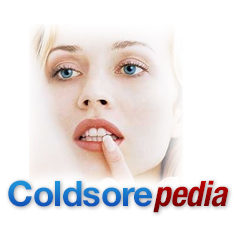 Cold sores –
Cold sores –
An outbreak of cold sores follows a fairly consistent progression. There are five phases of the outbreak: the prodromal, inflammation (pre-
During latency, the herpes virus retreats from the skin surface and stays in the sensory nerves. The virus is inactive during this time. It does not reproduce. Reproduction is the only “life” activity engaged in by viruses; the virus invades a cell of the body and uses the cell to produce copies of its own DNA, which are then released to invade other cells. Herpes simplex in its latent phase is either not reproducing or doing so at a rate that the body’s immune system can contain and prevent from producing symptoms.
A latency period of herpes simplex type 1 can end for any reason. Usually, though, the outbreak is triggered by something that weakens the immune system. This is where the name “cold sores” comes from: another illness, especially one involving fever as a symptom, can trigger an outbreak of herpes. Thus, an outbreak can occur while one is suffering from a cold. However, that is far from the only possible trigger and cold sores can happen when one does not have a cold as well. Other triggers include fatigue, menstruation, pregnancy, intoxication, stress, exposure to sunlight, temperature extremes, steroid medications, and dietary deficiencies. An outbreak can also occur when it is not associated with any particular trigger.
Stages
Prodromal Phase
Leading up to the eruption of blisters, other symptoms may or may not occur. A common symptom is itching or mild pain at the site where the blisters will later appear. This is the best time to begin a course of treatment with antiviral drugs, which makes the fact that symptoms don’t always occur unfortunate.
Inflammation Phase Or Pre-
During this phase, the skin becomes inflamed and swollen. Afterwards, fluid-
Open Sore Phase
This phase occurs as the vesicles or blisters burst open. A watery discharge seeps from the sores. This discharge is full of herpes simplex viruses, which makes this the most contagious phase of the outbreak. It is also usually the phase that occasions the greatest physical discomfort and pain. However, it’s also the shortest, lasting only about a day before crusting begins.
Crusting Phase
After the sores break open and discharge fluid, a crusty covering (somewhat like a scab) forms over it. The sore remains painful to touch. Also, the crust or scab sometimes breaks open and allows fluid to leak out. As this fluid is still packed with viruses, the sufferer remains extremely contagious. This phase normally lasts about three days.
Healing Phase
This phase is characterized by the scabs or crusts coming off without fluid discharge being present. New skin is formed under the blisters. The healing phase lasts about five days, ending when all of the crusts have fallen off and there is no visible sign of the outbreak. At that point the disease has returned to latency and although the sufferer remains contagious the possibility of transmission is much less than during the outbreak.
Avoiding Cold Sore Infection
It’s extremely difficult to avoid catching herpes. As noted already, people who have the disease never get rid of it (it just goes dormant), and although infection is much more likely from contact with someone who is having an outbreak, it’s possible to catch the disease from someone when no symptoms are present, i.e. during latency. It’s estimated that between eighty and ninety percent of Americans will be infected by age 50.
To minimize the chance of infection, however, avoid contact with the fluids discharged from open herpes sores. To avoid transmitting the disease to others, wash your hands frequently during an outbreak and use ointments to keep the discharge from the blisters from spreading. Antiviral treatments can also be used to shorten the duration of an outbreak, which is the most contagious period. Treatment Of Herpes Labialis
Treatment of the disease, if undertaken, usually consists of topical substances that can reduce the duration of the outbreak. Aciclovir and penciclovir are two antiviral medications that can reduce the duration of symptoms by roughly ten percent. Famcyclovir or valacyclovir can be taken orally in a single mega-
Prevention Of Herpes Labialis
There is no watertight way to prevent infection with herpes labialis, since the victim can be infectious to some degree at any time. However, the chance of transmission can be reduced by avoiding touching active lesions and washing hands often during an outbreak, and avoiding contact with others, especially by the infected area (e.g. through kissing or oral sex).
